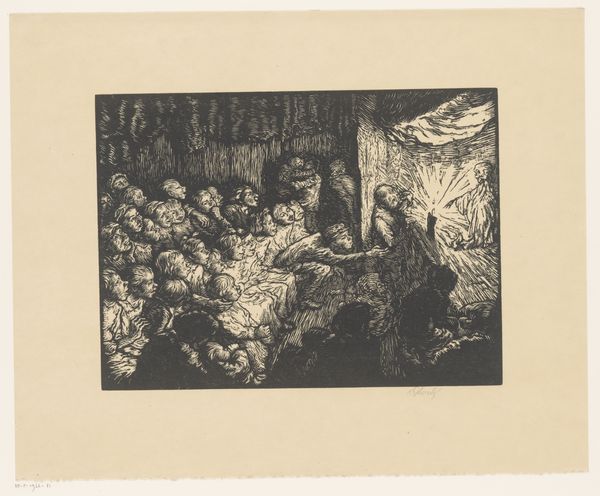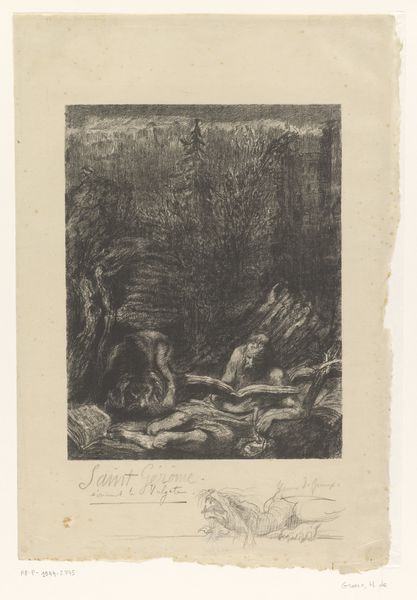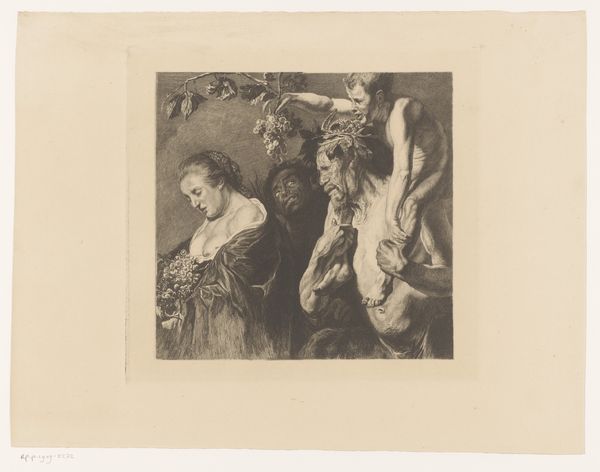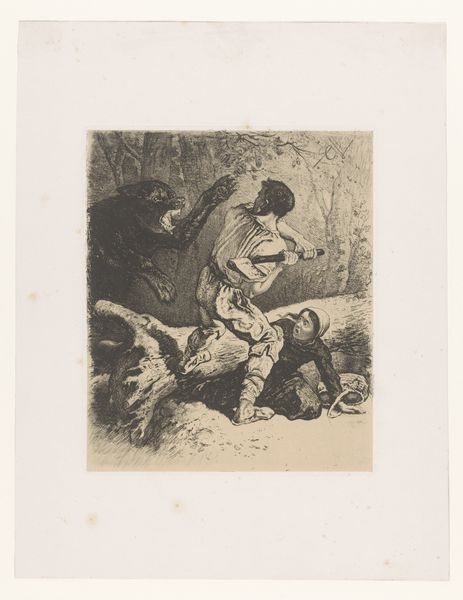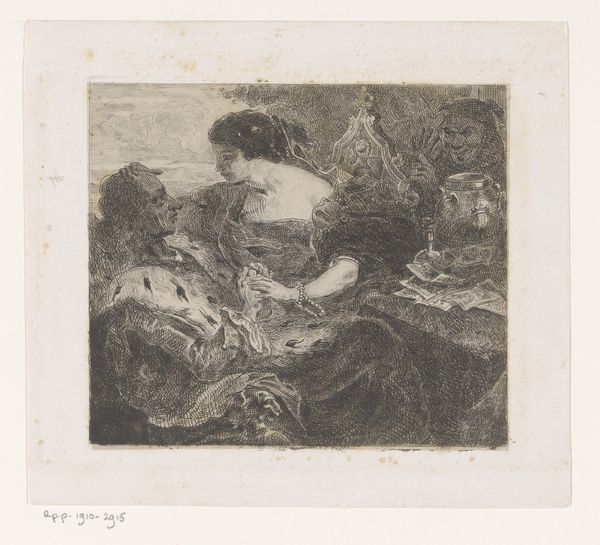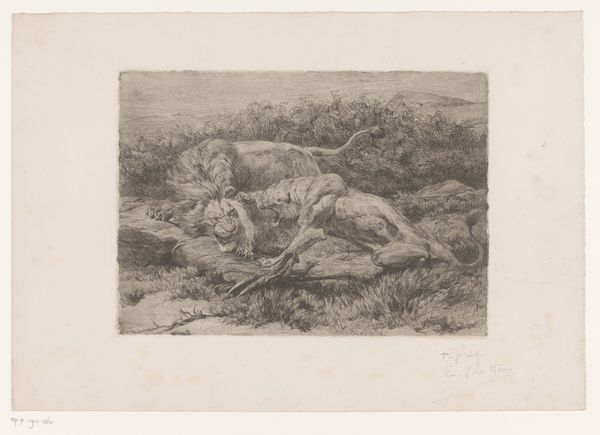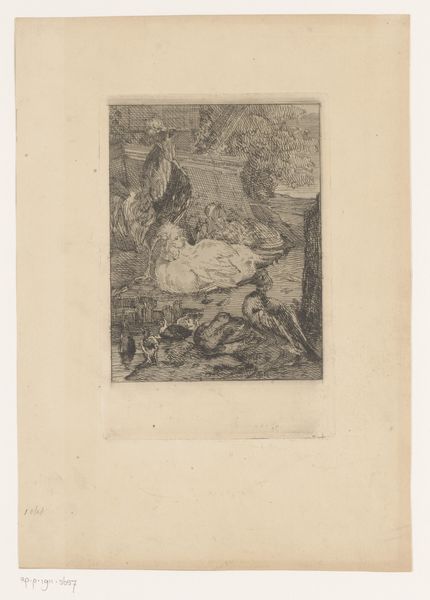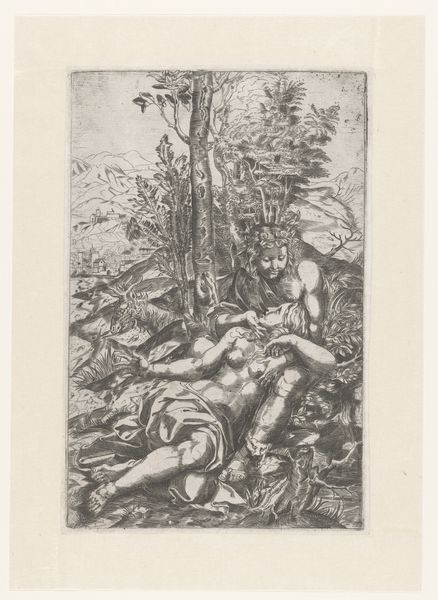
print, etching
#
narrative-art
# print
#
etching
#
landscape
#
figuration
#
symbolism
#
history-painting
Dimensions: height 555 mm, width 405 mm
Copyright: Rijks Museum: Open Domain
Curator: Henri de Groux created this etching, "Skelet te paard rijdt over gevallen strijders en puin," or "Skeleton on horseback riding over fallen warriors and rubble" in 1898. Editor: Well, that title pretty much sums it up, doesn't it? What strikes me immediately is the chaotic composition. Bodies strewn haphazardly, the skeletal figure dominating but almost lost amidst the devastation...It's incredibly dense and dark. Curator: Absolutely. De Groux was working at a time of great social upheaval and anxiety in Europe. Symbolism was peaking and he situates this work right in the anxieties about death, disease and social decay that followed a wave of violent conflicts, mass migration to urban areas and political repression. Editor: The etching technique certainly amplifies that sense of unease. Look at the frenzied lines creating the landscape, and how it models those prone figures, giving texture and movement to the chaos of bodies. Curator: Yes, and remember that De Groux initially intended to paint on a much larger scale. But his style, as exhibited by this piece and the limitations he confronted due to circumstances of economic and social mobility as they shaped exhibitionary spaces is indicative of anxieties on what could or should constitute a canon worthy aesthetic, an effect of a period of radical democratization and access to imagery of death that accompanied late 19th century industrialization. Editor: That focus really intensifies the visual horror, and gives the piece incredible immediacy. The high contrast and textural variety create an almost tangible sense of decay, while a clear emphasis in diagonals throws any notion of narrative or peace off axis. Curator: Exactly! It’s not just about depicting a battle. It’s about conveying a feeling, one rooted in late nineteenth century fin-de-siècle fatalism—something communicated by aestheticizing ruin and visualizing trauma that was more readily accessed throughout society in newly burgeoning publishing markets.. Editor: Ultimately, beyond its historical context, the starkness of the imagery remains powerfully evocative. It offers us, the viewer, access to something dark, something fundamentally visceral, and troubling at the same time. Curator: I agree, in focusing on that visual impact alongside our recognition of the time De Groux worked in, this gives viewers space for contemplating his vision and engaging with important elements of their world even today.
Comments
No comments
Be the first to comment and join the conversation on the ultimate creative platform.
